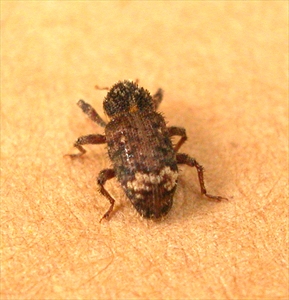- Widespread distribution. Central and South America, Caribbean, parts of US and Asia. An important pest.
- Adults lay eggs in base of stem ('crown') and in storage roots, and larvae do the damage by making tunnels. Same damage as sweetpotato weevil (Cylas).
- Does not fly; crawls from weedy borders.
- Spreads in cuttings and storage roots, same as Cylas.
- Cultural control: early, deep rooting varieties; plant only tip cuttings; remove wild morning glory; hill-up, covering cracks during dry times; ideally, make one-time harvest; 3-4-year crop rotation; after harvest, collect and destroy vines and infested storage roots.
- Chemical control: treat vines (bifenthrin); treat plants in field every 3-4 weeks (bifenthrin or fipronil).





